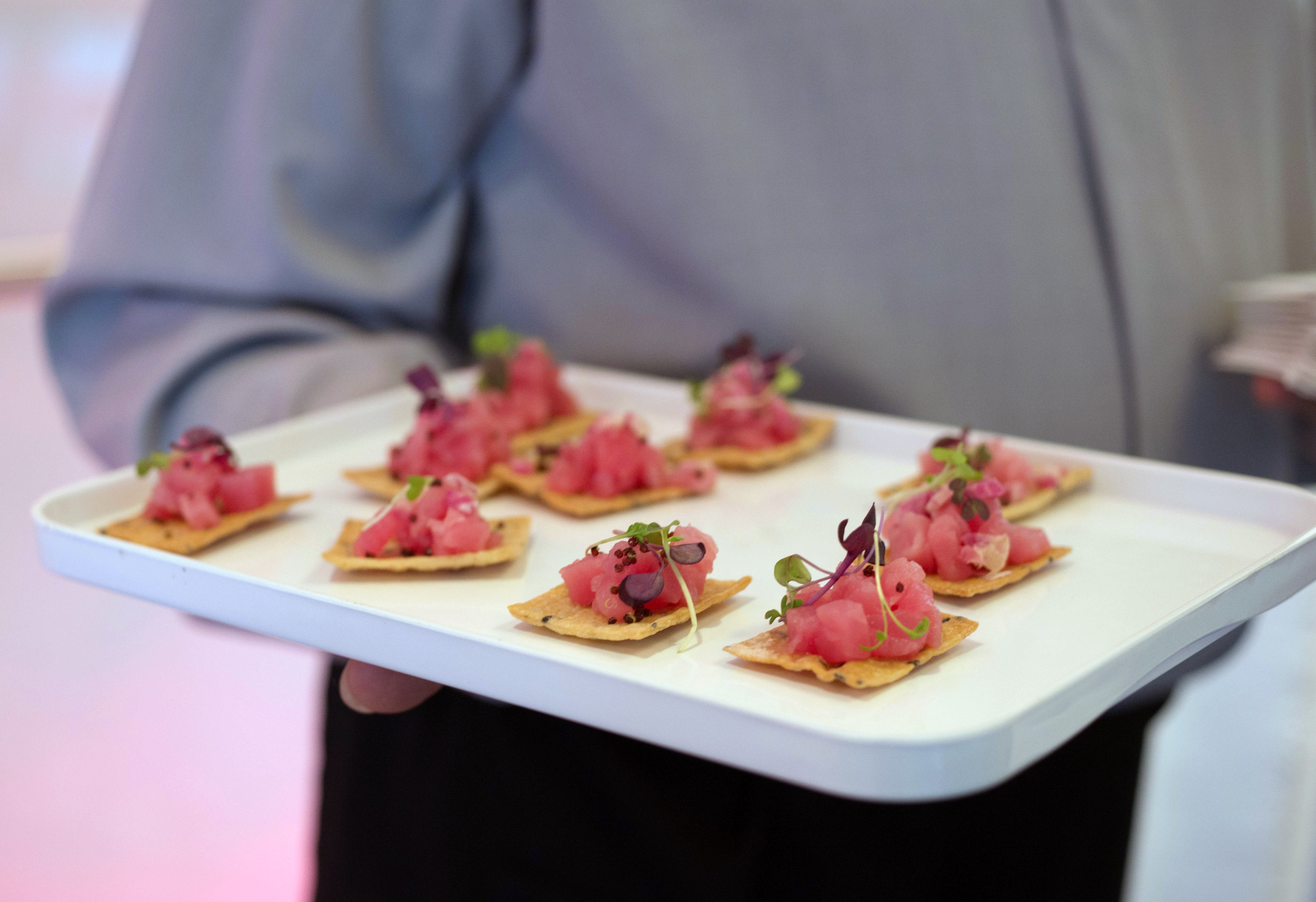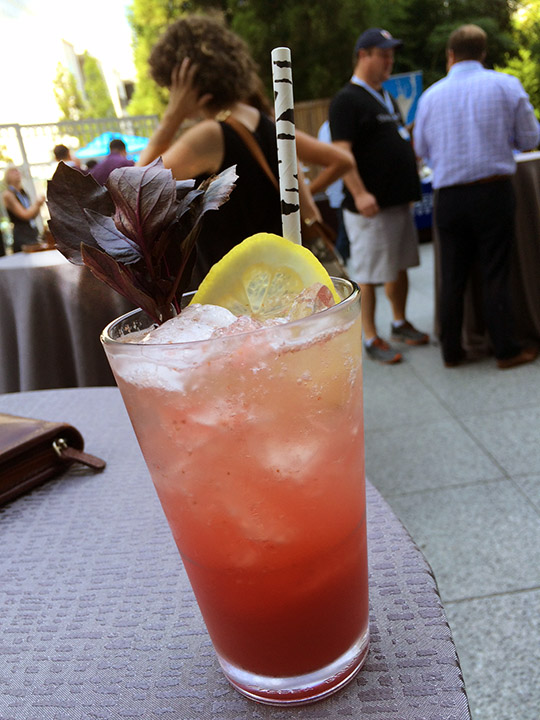This article was written by Catersource founder Michael Roman (now deceased), in the fall of 2003. It’s remarkable—despite the many years that have passed since he wrote it—how much his words continue to resonate for those in the catering industry... Especially those who feel particularly slammed during the holiday season. It felt right to dust this piece off, give it a bit of an edit, and run it again…early enough so that you can implement his ideas before the busy seasons hit. Enjoy. —Kathleen Stoehr, Director of Community & Content Strategy
---
It’s the month that can make or break a catering business.
December has always been an important month for caterers: most make 20 to 40% of their annual sales in that one month. But December is also particularly challenging. Clients wait until the last minute to make buying decisions, they’re shopping more, they’re less likely to be loyal to one caterer and they’re obsessed in their search for lower prices.
But simple action plans for October and November can help caterers create a more peaceful and prosperous December.
Strategies for salespeople
Look at everyone who had an event in December 2016 and who hasn’t booked anything for this year. Make a list of these past sales, noting the actual date of the 2016 holiday event. Was it on a weekend or a weekday? What time did the party start? What style of service was used? When calling these past clients, never imply that your availability is running low. Always demonstrate love and caring for past clients; call to assure them that you are looking out for them. “I just wanted you to know I’ve placed a tentative hold on December 14th for this year’s holiday event, which is the same day of the week that you used last year. You can always change the day, but I wanted to make sure we gave you the first option on that date.” Banquet salespeople can add, “I’ve been able to reserve the same room for you as last year.”
Salespeople need to respect that many corporate shoppers have been instructed by management to look for lower prices. It’s important for them to hear immediately from the salesperson that they can select from medium-, high-, and lower priced menus. Say, “You’ll be happy to know that our culinary team has created a wide variety of exciting and tasteful menus that also have a wide range of prices. I’m confident that we will be able to provide you with a successful holiday event that will meet this year’s budgetary concerns.” The most important goal for the sales department in December is to simply get the client to provide correct and final information on menu, colors, staffing, and guest count as early as possible.

Tuna with watermelon radish, crispy quinoa, radish sprouts on a sesame cracker from Puff ‘n Stuff. Photo courtesy Puff ‘n Stuff
Catering Tip: Hors d’oeuvre mania!
Locate last December’s event menus. Count the number of different hors d’oeuvre you sold. You may not believe what you find. The average would be 45 different items. Where is your company on this hors d’oeuvre mania scale? Whatever the number, cut back during the busy season. Creativity in menu design is important, but so are survival and sanity. Temporarily limit the holiday hors d’oeuvre selection list to 25. Your culinary professionals will be grateful.
Suggestions for the operations team
Both off-premise and banquet caterers put a lot of pressure on their operations people during December. The overall pace, increased volume, last-minute bookings, and client changes make getting the right equipment to the right events or setting the banquet rooms correctly difficult at best. The success of the operations department stems directly from its ability to get information about the events (who, what, where, and for how many) from the sales staff as early as possible. The operations team needs to be assertive in dealing with the sales department.
Operations people need to spend time in the sales office (many assume this isn’t proper) and look into the eyes of the salespeople to remind them they are waiting for information. While in the sales office, the operations staff becomes a valuable resource by answering any and all questions. Operations needs to constantly check and recheck such simple things as delivery directions, equipment inventory levels, and banquet start and stop times. Too often, the operations staff seems to be “working” for the sales department. In December the sales department should be working for the operations department in the pursuit of an error-free month.

Tips for the kitchen
If the kitchen isn’t the “heart” of a catering success, what is? During December the kitchen is the protector of quality and image. Everything that has been promised to clients depends on the hands and stamina of the kitchen team. The culinary professionals in the kitchen need to maintain a steady pace. Time is their enemy. Deadlines are their curse. Last-minute customer changes are their nemesis. The sales department needs to provide full information to the kitchen. A great idea is to hang a huge sign in the kitchen stating “Never Assume Anything During December.” Information needs to get to all the kitchen staff. Little things can cause big problems if they are not communicated—like customer special requests for no walnuts in the salad, extra garlic in the pesto sauce, no honeydew melon on the fruit kebobs, pork ribs cut in threes instead of twos, and no salt. You need face-to-face meetings between the salespeople and the culinary leaders. E-mail won’t do it. Notes won’t help. You have to be able to look into each other’s eyes and ask simple questions. Catering is a business of “exceptions.” Meetings help everyone understand the exceptions for each job. Kitchen success during December comes down to understanding and practicing the basics such as first in, first out in the cooler, preparing menu items ahead, hand-washing, proper seasoning, and meeting deadlines.
Reminders to management
In December, managers need to be coaches more than at any other time of the year. They need to motivate, counsel, teach, and lead their teams. Managers are December’s bandages—they apply themselves to anyone who needs them. Managers should focus on any and all staff concerns or frustrations that might negatively affect the company’s goals for December. It is a time to listen and give answers that provide solutions, versus poking holes or questioning every task. Rather than answering questions with declarative sentences, it might be wise to answer questions with questions. “What should I do?” is often best answered with “What do you think you should do?”
Managers need to break the tension. This can be as simple as offering praise, or ordering pizza for a staff break. During crunch time, a team wants to know that the coach is supportive as well as authoritative. Team players also need to know they are appreciated for their contributions. However, managers need to target and monitor quality during the December rush. They are the “guard dogs” of the company’s image and can’t afford to let anything slip. The biggest error that managers make during December is to ease up or relax rules and policies because everyone is so terribly stretched. Quality must be maintained and managers need to ensure that everyone has the tools and direction to succeed.

A non-alcoholic Berry Tart Cooler, developed by Spirits in Motion, contained strawberry puree, agave sour, basil/strawberry shrub, and is topped with soda—plus eye-catching garnishes. Photo Kathleen Stoehr
Catering Tip: Alcohol-free events
DUI and sexual harassment lawsuits have caused many event buyers to curtail or cancel their holiday events. Many of these same clients believe that both on- and off-premise caterers require the purchase of alcoholic beverages at events as part of their package. If you want to change this perception, market alcohol-free events and push your new and amazing nonalcoholic beverages. Eliminate the bartender and create “beveragemeisters.” Create fun and sexy names for alcohol-free hot and cold drinks. Just paper straws for color and fun garnishes. Add layers of flavor such as habanero or cayenne, use shrubs and tinctures, and consider vegetable juices such as carrot or cucumber.
December ‘jumpstart’ marketing ideas
Caterers market their services all year long, but the holiday season brings special challenges and opportunities. Here, Catersource offers a few marketing tips to help you get ready for the weeks ahead.
• Create reduced menus. Create a smaller, less complicated holiday menu with food items that make kitchen production easier to handle.
• Set higher minimums. Especially for those customers who only call once a year. Make exceptions for regular buyers.
• Buy ready-to-use menu items. To save kitchen labor and production time, purchase more frozen and fresh ready-to-go hors d’oeuvre, salads, and entrees.
• Create panic menus. When customers call in a last-minute panic, require them to select from a special kitchen-friendly menu list.
• Offer client-appreciation events. It’s good business to thank clients for past support. Market a program for companies to give your catering to their biggest clients as a gift. Or, have companies invite their clients into their location, or the caterer’s venue, to express thanks.
• Market value days. Market December 27–30 as smart days to book holiday events. Customers will get lower prices, enhanced (and rested) service staff and less likelihood of a conflict with other holiday events.
• Up-sell a holiday/picnic bundle. Offer added incentives or discounts when a client books a holiday event and a summer picnic at the same time.
• Sell indoor picnics. Banquet facilities, convention centers, and larger venues can offer December indoor picnics for holiday events. Customers see them as a good value, and they’re fun.
• Market communal holiday events. One venue, one band, one menu, but lots of different non-related company groups as guests. Sell tables of 10 to smaller companies that usually don’t have a big holiday party. These companies can stick to themselves or meet others.
• Offer a snow discount. On the day of the event, the amount of official snowfall for the city becomes an additional discount. If three inches fall, the client gets an additional 3% off. It helps overcome concern about bad weather. (Sun-belt caterers can use rainfall as the measure.)
• Hold a holiday open house. Invite clients or new prospects, for a holiday idea and tasting session—great for banquet facilities. This is classic “show-and-tell,” offering design, theme, and menu ideas. It can be done during lunch or in the evening. Off-premise caterers can use one of their favorite venues.
• Market gift certificates. Place ads or use direct mail to explain your new $1,000 to $5,000 party gift certificates for the person who has everything. It can catch the eye of people who will show your ad to their friends and family, saying, “This is what I want for my gift this year.”
• Market corporate gift certificates. Many corporations struggle over gifts to give their best clients. Here is the answer: A catered party that can be scheduled at the client’s convenience.
• Mail a warning postcard. Send a postcard that has only the following message on the front: WARNING: FAILURE TO GIVE YOUR CLIENTS OR STAFF A HOLIDAY PARTY COULD PROVE INJURIOUS TO YOUR COMPANY’S HEALTH. The message should look and feel like the warning on the side of a pack of cigarettes. This dramatic image always makes it out of the mailroom to the executives’ desks.
• Market face-to-face—the best way. Visit your past clients in person. Shake hands. Meet their coworkers. Be the star that you are to them. If you’ve done great parties for them already, you’re a “food celebrity” just like those they see on television.

Catering Tip: Remember Thanksgiving
It’s good to be first. So, purchase, or create, Thanksgiving holiday cards that are mailed in November instead of waiting to mail a traditional holiday card in December. Most card manufacturers offer a wide variety of Thanksgiving cards that feature messages expressing thanks for a customer’s business. They are politically correct, non-religious, unique, and remind the client in November that you are thinking about them. It is the first holiday card to be “put up” for all to see. It also might remind them to call to book the holiday event. Caution: don’t try to sell in the same envelope that the card is in.
Catering Tip: Think ahead to the 1st quarter of 2018
For most caterers, December proves to be their first or second largest volume month. However, except for the sun-belt caterers, January, February, and March prove to be the smallest volume months. One reason for this is because caterers spend so much energy on their December bookings, that they ignore the need for early year bookings. If a buyer calls in December to schedule a February event, you may be tempted to say you’ll call back after the holidays. Think about this: A buyer is being sent away! Go out of your way to close these first quarter events during December.



